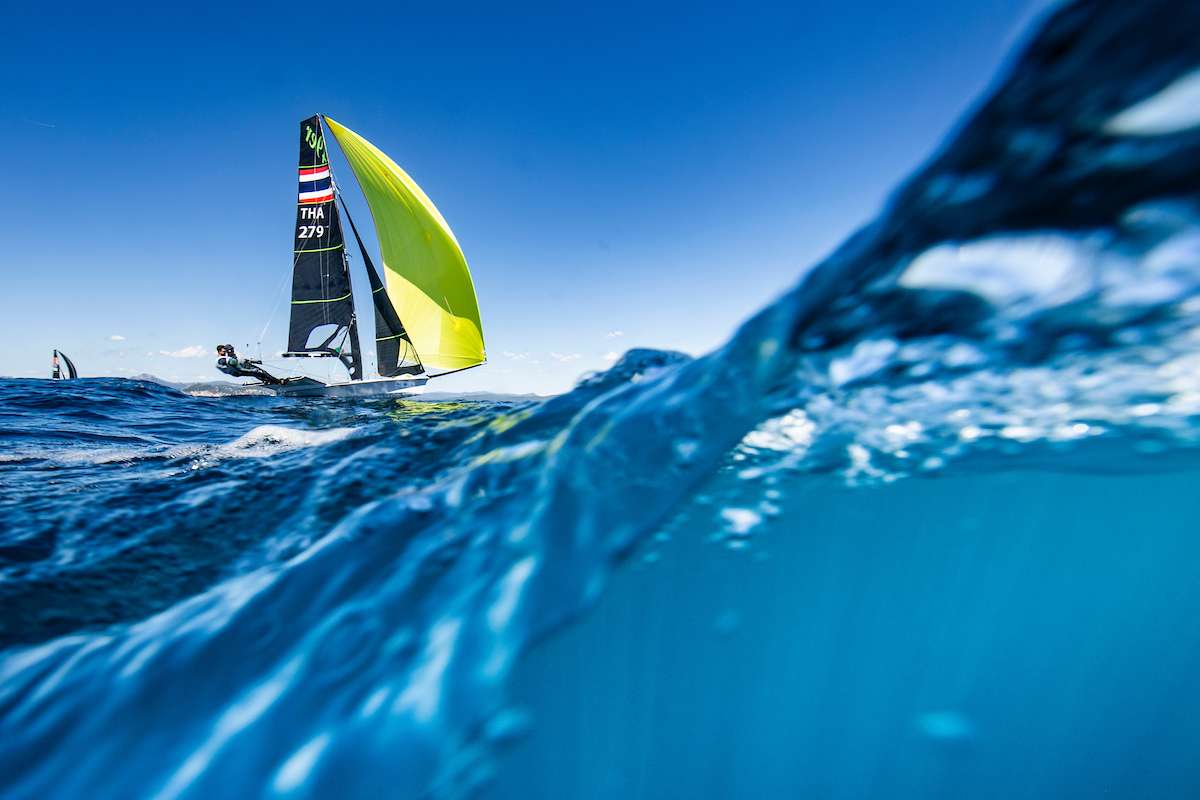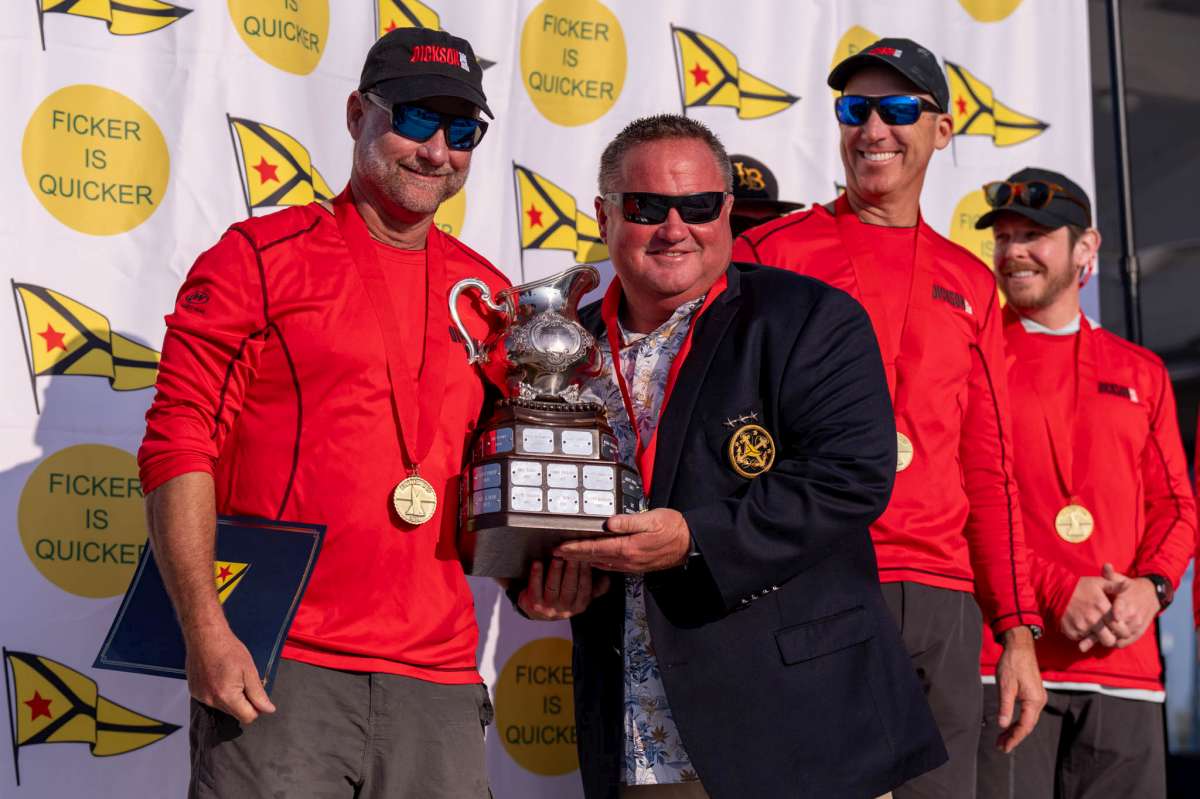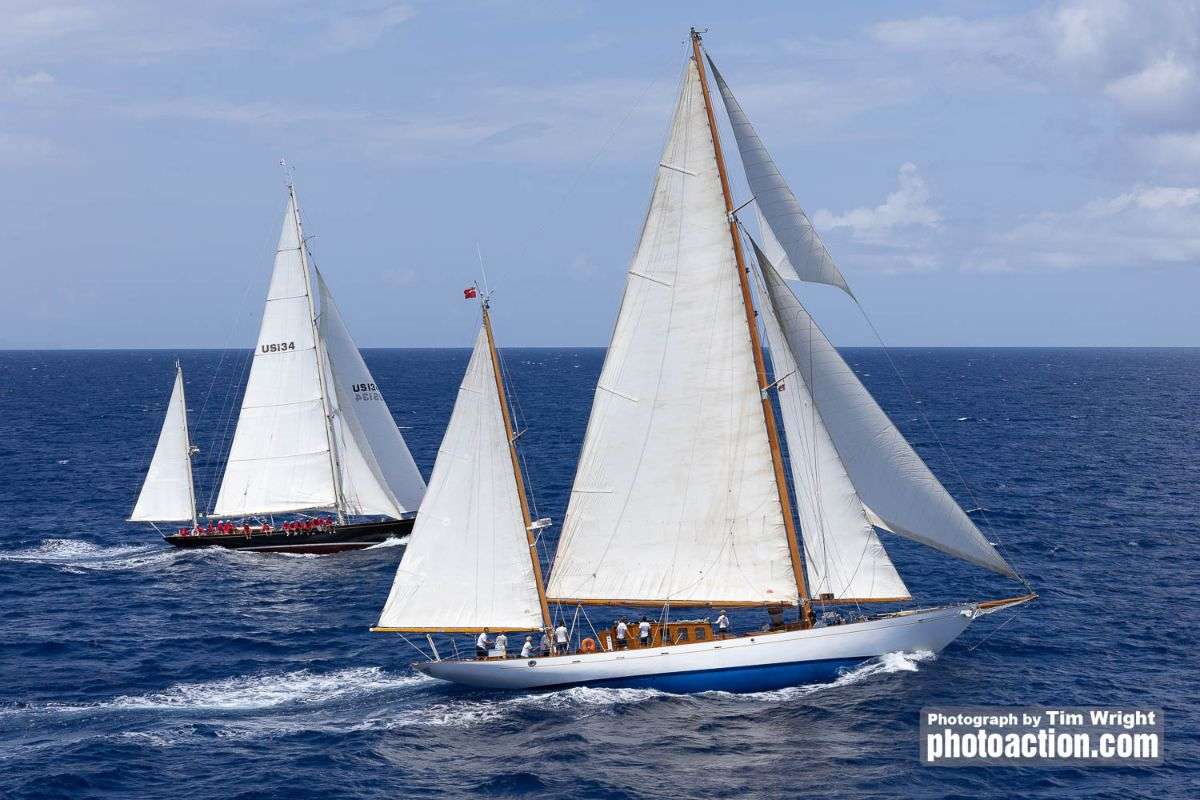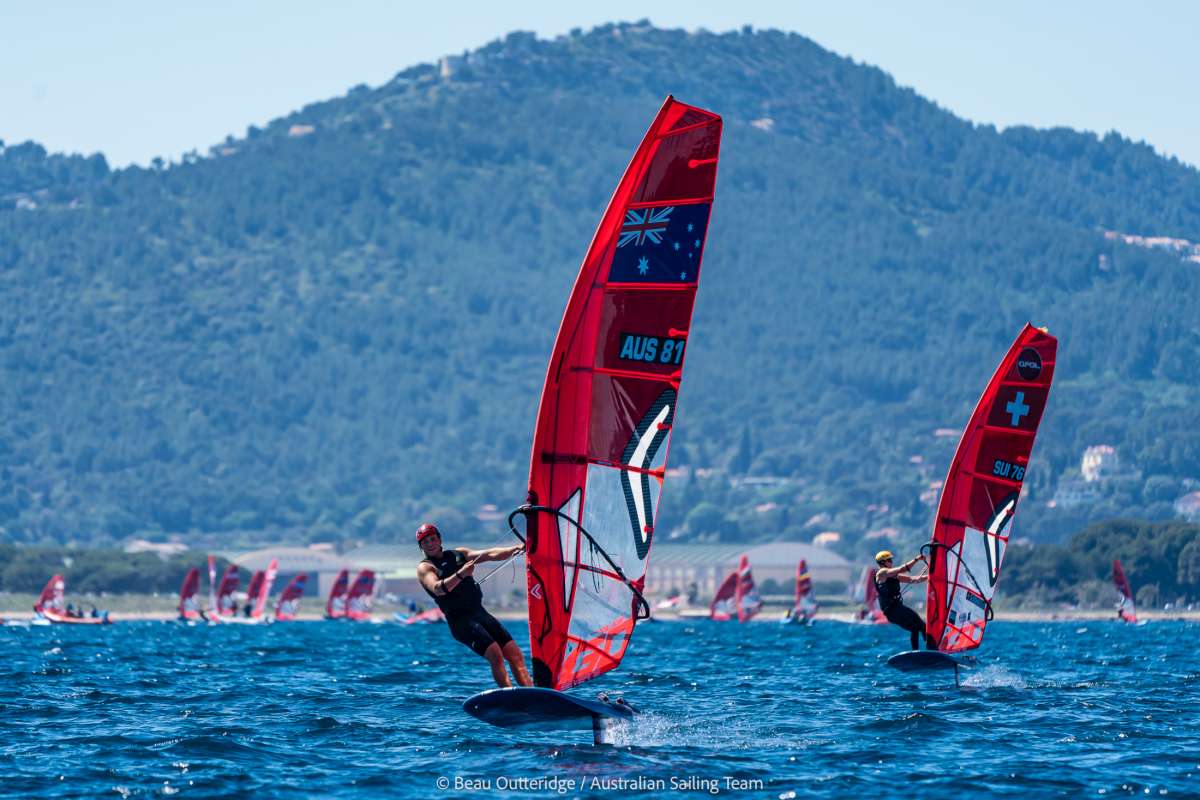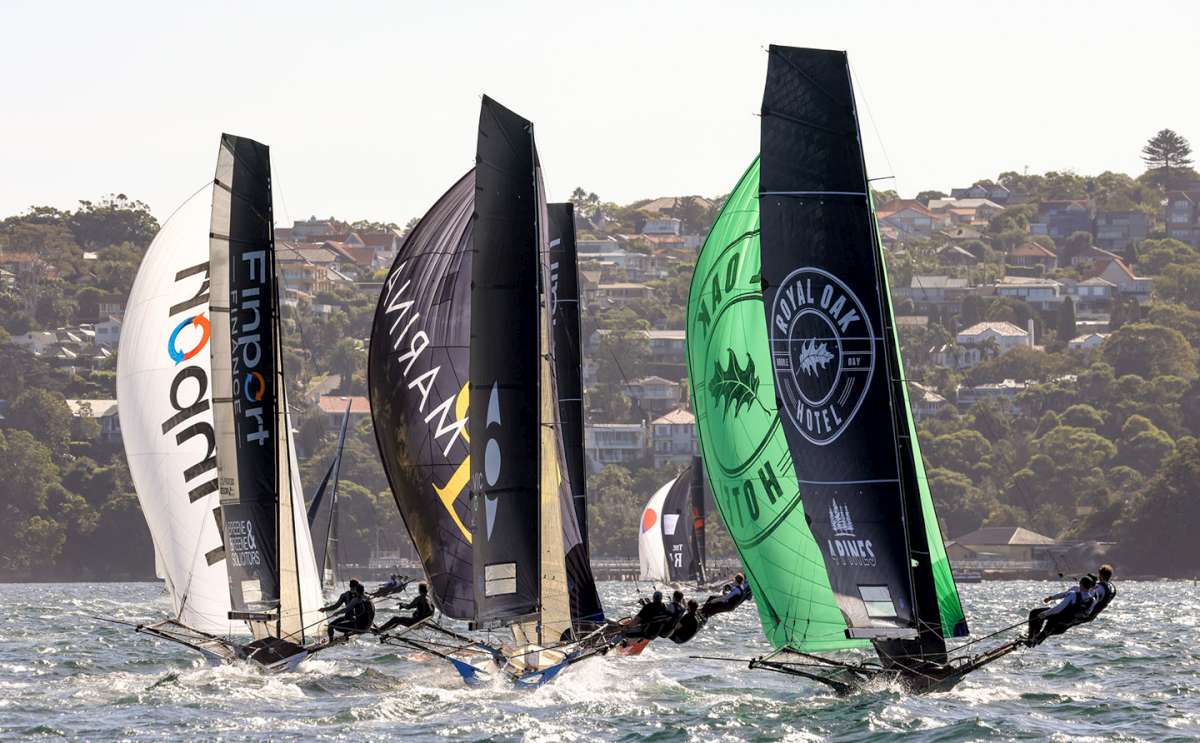Australia’s premier ocean race has always had an international flavour; Captain Illingworth, who started the whole Sydney Hobart thing was, after all, an Englishman.
In the heyday of the great aluminium maxis, legendary boats like Nirvana, Kialoa and Condor of Bermuda would trek from across the Pacific for the Cruising Yacht Club of Australia’s race to thrash it out with the local Helsals, Sovereigns, Apollos, and Ragamuffins on the Derwent.
Each year you have been able to find boats and people from England, New Zealand, America, Germany and Russia – a veritable UN of sailors – scattered among the boats in town for the Rolex Sydney Hobart – manoeuvring for a clean start on Boxing Day.
And so it is that this 70th race has maintained the international tradition. In spades.
Of course most attention has been focused on the brash American newcomer, Comanche. Launched just weeks ago in Maine, Comanche’s American and multi-national crew, including Australian America’s Cup winner, Jimmy Spithill, have been spending the as much time on Sydney Harbour as they can, working out how to sail this genuinely radical monster of a boat.
Comanche’s owner, Jim Clark, concedes that a Rolex Sydney Hobart isn’t the ideal first race for such a big, complex machine, but: “I am married to an Australian, and I’ve seen the start of the Rolex Sydney Hobart a number of times. My good friend Neville Crichton challenged me to come down.”
And then comes the clincher, the phrase yachties around the world can only dream of as they pour the family fortune into a watery hole: “MY WIFE MADE ME DO IT,” Clark insists.
“This race represents the greatest race in the world,” Matthew Fortune, the skipper of the German Tripp 57 Passion 4 C declares. “It is so exciting to be here. It is a privilege to do the Rolex Sydney Hobart. I’m up with alongside the greatest boats of all time; a little guy in a sea of giants.
“The planning for this started four years ago. We have journeyed 13500 miles to get here. Then we’ve had to refit the boat in the last two weeks from ocean crosser to Hobart racer.”
“It’s taken us five years to get here,” Poland’s Mariusz Koper says. His Oyster 72 Katharsis II has covered more than 70,000 miles in that time. “I am not a racer, more like an explorer.
Two years ago we sailed the North West Passage in the Arctic, next year we aim to go to 78 degrees south. On the way we thought it would be amazing to come here.
“We crossed the Atlantic, ended up in Tahiti, but instead of coming straight here we went around Cape Horn to Patagonia, then down to Antarctica. So we had to come back here, but I did not want to take the same route, so we sailed north to Greenland, meaning we have come from the very top of the world.”
Koper will concede that his hefty 50 tonne Oyster will not threaten the likes of Comanche or Wild Oats XI (unless maybe physically). Most of the other foreigners, though, are not just here for the experience.
Manouch Moshayedi, the American, has made massive changes to his Rio 100, the former Lahana. He has widened the boat and made her two feet longer, fitted twin rudders, eliminated the water ballast to make her lighter and installed a lifting keel that can be raised and lowered between 14 and 19 feet. He describes her as a TP52 stretched to 100 feet, with the Transpac Race in mind.
“We are very good downwind in light winds. And of course someone told us there were light winds in the Rolex Sydney Hobart and we came here. I guess we were misinformed,” Moshayedi jokes.
“We are made for lighter winds. If it is really windy Jim Clark will enjoy it, if it is really light I will.”
“In light air downwind we are not that good,” Jim Clark concedes. “This is a cross wind boat. We have a massive front end, a lot of surface area. We have to get it on its side for it to go.
“When the boat is on its side, 25 degrees or so, we probably have the same wetted surface as Wild Oats XI, but it still has plenty of power. But it still has a lot of boat to bash into the sea, so if there is a lot of chop to the water, it would slow us down more than they would.
“If I had just wanted to win the Hobart I would have just copied the most successful boat ever.”
Clark frequently describes Comanche as a Volvo 70 on steroids, and basically he wants V70 conditions, though maybe not too V70.
New Zealander Jim Delegat and his V70 Giacomo would love a rip-roaring, hang-on-by-your-fingernails Rolex Sydney Hobart, as would the local V70 Black Jack. These are the dark horses in the race for line honours this year. Fast, almost as fast as the 100 footers, but able to keep going when the bigger boats have to think about survival as much as winning.
”Comanche is new, to a new design,” Clark says. “The design and analysis have been very rigorous. Lots of simulations and tank testing. I am very confident it is built well, but these conditions (off the southern New South Wales coast and in Bass Strait) can be nasty. The most difficult thing is slowing the boat down in high winds so we don’t beat it up.”
You take whatever comes with the Rolex Sydney Hobart. With such disparate boats on the race course the weather, as much as tactics and boat skills may separate the victors from the also rans. It is a long way to come, from the other side of the world, for a lousy forecast. But come they do.
The British Swan 68 Titania of Cowes is back for her third straight race. “We thought she would be going back to England, but after we finished last year the owner, Richard Dobbs, changed his mind and said he wanted to do it again,” says her bemused but delighted sailing master, Tasmanian Gina Hewson.
So for yet another year, almost 8 tonnes of cruising gear is being hauled out of the luxurious Swan onto the Cruising Yacht Club of Australia dock to get her down to racing weight.
Max Klink, the skipper from the first ever Cayman Islands entrant called Caro, a Botin 65, a plush, push-button cruiser that “can race a bit.”
‘Race a bit’ as in smashing the ARC race record by 8 hours, and loading the boat with Volvo Ocean Race veterans for this event.
It is said that every politician secretly carries a Prime Minister’s baton in their pocket. It can probably be safely said that every sailor who has crossed the Boxing Day starting line has his or her eye on the Rolex watch waiting in Hobart for the winner.
Over and over you hear from international sailors that they have always wanted to “do the Rolex Sydney Hobart”. “Just finishing the race will be good”, they declare. Yeah, right. That is why they have brought their gleaming thoroughbreds and homely cruisers half way around the world.
Even “explorers of the world, not really racers”, like Mariusz Koper can always use a good timepiece.
The start of the Rolex Sydney Hobart Yacht Race will be broadcast live on the Seven Network throughout Australia and webcast live to a global audience on Yahoo!7.
A Parade of Sail will take place from 10.30am to 11.30am, before a fleet of 117 yachts set sail from three start lines in the Rolex Sydney Hobart Yacht Race on December 26 at 1.00pm AEDT.
By Jim Gale, RSHYR media




